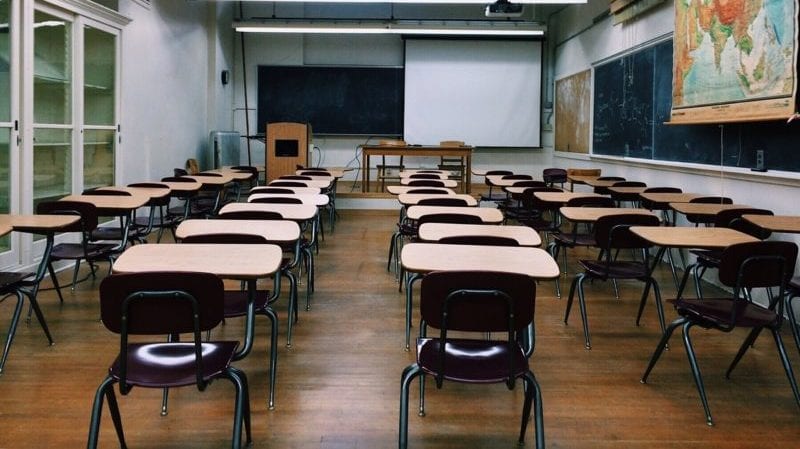Here’s the thing about school when you’re a teenager: It’s not that fun. There are a lot of wonderful things that happen during middle and high school, but they rarely happen in a classroom setting. Even when classes are super-interactive and you get to play Jeopardy before tests and the teacher gives out candy, you’re still trapped in someone else’s plan for your day. A couple of years ago, I decided to change that.
The first day of class, my kids get a syllabus and a “course catalog.” My school is big on preparing our kids for college, so I wanted to structure things as much like a college class as I could. They get 20 minutes to look over their options, which include topics like “Shakespeare and Film: Old Dead Poet Meets Hot Young Actors” and “Civil Disobedience and Peaceful Protest” and “Media Literacy, or Why Nobody Should Ever Keep Up With the Kardashians.” They talk about it with their classmates. They go over it with their parents. They choose the classes that sound most interesting, and I sort through the whole class’s votes. The top three choices are the topics we study that year. This has brought about more positive changes in my classroom than I can list, but here are a few.
1. I’m less bored.
Yes, it’s more planning time (although not as much as you might think!). But I no longer spend two months reading the same chapter of The Giver four times a day. Maybe my first period takes a hike as part of our study of nature writing. Then second period works on writing grants as part of their immigration unit. Third period is reading Staying Fat for Sarah Byrnes, which is always a classic. And fourth period continues to compare Star Wars: A New Hope to Joseph Campbell’s The Hero’s Journey. It’s actually pretty great. It enables me to structure my day so that some classes are working independently while others require me to be more hands-on … it gives me a lot more flexibility to think about what I need as a teacher.
2. There’s more buy-in from the kids.
They get excited about what they’re studying. They talk about it with their parents and their parents get excited. They suggest materials or ideas to go with our topic. (Which is sometimes annoying. I do get tired of saying, “No, we cannot watch [horror movie of your choice] in class. Even if it does talk about urban legends.”) They find out what other classes are reading or studying and ask questions about it. While they’re not necessarily chomping at the bit to do their homework every night, they are more enthusiastic about learning than they were before I started this experiment.
3. It’s improved my relationship with the kids.
This is the big one. They’re used to having minimal choices when it comes to their education. Basically, they choose whether or not to do the work. In my class, they choose what we study and I choose the materials and activities we use to study it. Even though I’m ultimately in charge of what we read and write and watch, they feel like they have a voice, and their opinions are heard and respected.
4. I have to discipline less.
The more democratic structure of the classroom has completely changed the way I redirect students. On those days when a whole class is crazy, I can say, “Take out your journals. Everybody spend five minutes telling me what’s going on today. Is it something that happened earlier, or does it have to do with what we’re doing in this class? Are you guys bored with this topic? What suggestions do you have?”
Or when they don’t do their homework, I can start an open discussion of their reasons and get honest answers. Sometimes it’s, “Well, we all had a huge science project due today, so we didn’t get our rough drafts done.” Sometimes it’s, “We procrastinated and didn’t start on this two-week project until yesterday. Oh, and we didn’t do anything in class on Thursday when the sub was here.” Either way, it gives us a starting point.
So on Monday, one class will begin a unit on life skills. Two others will study race and culture, while the last class works on immigration. It’ll be chaotic and fun and exhausting, like teaching always is. My lesson plans will make sense to no one but me. And I can’t wait.

